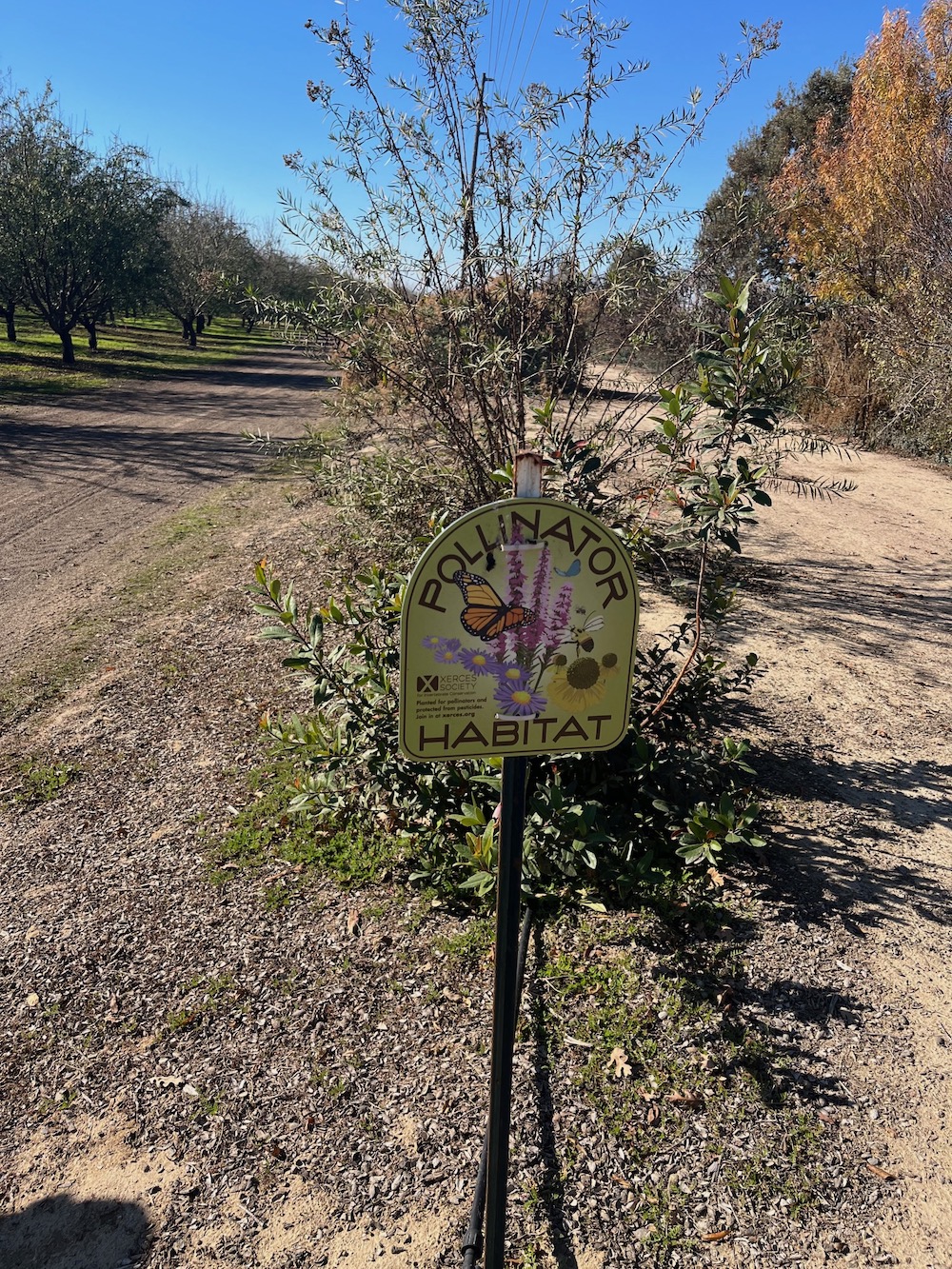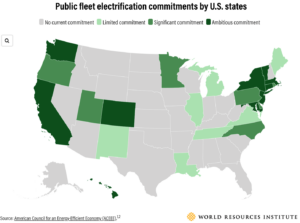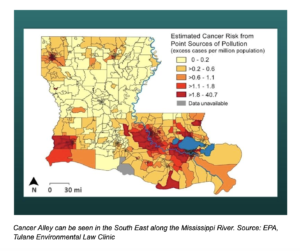WATERFORD, Calif. — Wes Sperry points to cover crops sprouting between almond trees and a thriving pollinator hedgerow as evidence that his orchard’s transition to regenerative farming is underway. The fifth generation in his family to run Sperry Farms, which grows almonds in California’s Central Valley, Sperry is determined to sustain it despite the droughts, heavy rains and market fluctuations that make farming tough these days.
Sperry Farms is part of a pilot program run by General Mills and American Farmland Trust to train and support farmers in adopting regenerative agriculture — a set of practices that improve soil health and reduce farming’s carbon footprint by absorbing carbon deep in the soil. Sperry is using those techniques on a 125-acre plot; if all goes well, he will keep converting his 1,100-acre farm.
General Mills aims to advance regenerative agriculture on 1 million acres of land by 2030, a promise it made in 2019. That commitment is one way it hopes to reduce greenhouse gas (GHG) emissions throughout its value chain 30 percent by 2030 and to net zero by 2050.
"We are about halfway there, with 500,000 acres engaged in our programs," said Jay Watson, General Mills’ director of regenerative agriculture, in an interview.
A 'systems change'
The global food system produces a third of global GHG emissions, with about half of those coming from farm operations. Regenerative agriculture has emerged as a mainstream concept in the last several years, even though the practices are centuries old. It is widely accepted as a key lever for reducing agriculture’s GHG footprint while helping farmers improve soil health and bolster their economic resiliency.
Along with General Mills, other large food companies including PepsiCo, Nestle, Danone, Unilever, Cargill, ADM and Bunge, have made big commitments to support regenerative agriculture. And at COP28, the climate summit in Dubai, Regenerative Landscapes was one of five Action Agendas, resulting in three multicountry and civil society commitments to make agriculture more sustainable as well as $7 billion pledged to help farmers reduce emissions and adapt to climate change.
Regenerative agriculture isn’t the only solution for lowering farming emissions; ending deforestation and reducing enteric methane emissions are among other key imperatives. But it is one path readily available and has the side benefit of helping farmers.
"We work at the supply-shed level," said Watson, pairing with organizations that already have relationships with farmers, such as the American Farmland Trust, to provide technical assistance, one-on-one coaching and sometimes financing.
General Mills’ regenerative practices "are very place-based," Watson said, with choices about which cover crops or how much to till or whether to use herbicides all dependent on local soil types, weather and crops grown.
The company’s ultimate goal is a "systems change" in how agriculture is practiced everywhere.
Insurance on the future
Inflation, extreme weather, rising fertilizer prices and market imbalances have made family farms, such as Sperry Farms, more vulnerable than ever.
"The economic margins out here are so razor-thin," Sperry said. Through cover cropping, composting and eschewing chemical fertilizers and pesticides, he hopes "to create a more environmentally sound farming system," to last for generations to come.
For General Mills, too, it’s about insurance on the future of its business. The giant food company depends on improving the notoriously depleted soil in the U.S. and preserving biodiversity to keep producing, Mary Jane Melendez, its chief sustainability and global impact officer, told attendees at GreenBiz 23. Topsoil is eroding at a rate of 1.9 millimeters a year across the Midwest farming states, according to a study by geoscientists from the University of Massachusetts, double the rate the Department of Agriculture considers tolerable.
General Mills would not disclose its total investment in regenerative agriculture when asked. But it invested $2.3 million in a partnership with ALUS, a Canadian nonprofit that helps farmers improve soil health through nature-based solutions, and $3 million in the Ecosystem Services Market Consortium. Investments in several other partnerships to work with farmers across the U.S. add millions more to that total.
How successful has it been? General Mills says 100 percent of its 10 priority ingredients are sustainably sourced, and its Annie’s, Cascadian Farms, Cheerios and Nature Valley brands all boast about sustainably grown ingredients.
But the regenerative agriculture program has yet to translate into lower GHG emissions. For 2022, General Mills’ Scope 1 and Scope 2 emissions dropped 26 percent from the year earlier, but Scope 3 emissions rose 2 percent. When it reports 2023 emissions in April, General Mills anticipates supplying precise, region specific emissions that hopefully might show progress.
"Farmers are clearly observing benefits to soil health, biodiversity and being able to reduce fertilizer, pesticide and herbicide use," said Steven Rosenzweig, the company’s senior agricultural scientist. "Also some farmers are seeing more profitability — though not everybody."
Sperry, for instance, told GreenBiz he has yet to fully recoup the costs of equipment, seeds, composting and labor in the three years since he enrolled, although he’s seeing healthier trees, less water runoff and lower irrigation costs.

![]()
![]()
![]()
![]()
![]()
![]()
Kansas wheat farmer Austin Schweizer has seen more promising results since beginning the transition five years ago. "My yields are as good as the most successful conventional farm’s," said Schweizer, "but I have less input in them" and thus lower costs.
According to a study of 100 U.S. farms by Boston Consulting Group, the World Business Council on Sustainable Development and the Council’s OP2B coalition focused on nature, the transition from conventional to regenerative practices typically costs a farmer three to five years of lower profits, but afterward their profits rise and can be as much as 70 percent to 120 percent above conventional farming returns, depending on practices used, for an average long-term return on investment of 15 percent to 20 percent.
"The economic case for transition to regenerative agriculture is positive in the long term," said Doug Petry, the report’s author and manager of OP2B. "There’s tremendous need to support farmers and derisk farm transition."
Nationwide, farmer adoption of regenerative practices appears to be growing incrementally but hard to measure. The Department of Agriculture and American Farm Bureau estimate that 140 million acres, or 15 percent of total U.S. farmland, are receiving financial and technical assistance from the federal government to employ conservation practices, a proxy for regenerative practices. Precedence Research estimates that only 1.5 percent of U.S. farmland is cultivated specifically with regenerative practices.
To help make regenerative agriculture more lucrative for farmers, General Mills co-founded Ecosystem Services Market Consortium to develop marketable credits that reward farmers for quantifiable impacts such as soil carbon sequestration, lower emissions and water conservation. And it’s trying to strengthen market demand among retailers, partnering with Walmart and Sam’s Club.
Widespread adoption would be good for more than just General Mills.
As COP28’s Call to Action states, "The call to transform our food systems into one that is resilient, fair and sustainable is echoing louder than ever," as climate, water availability and feeding a growing world population are at stake.
- SEO Powered Content & PR Distribution. Get Amplified Today.
- PlatoData.Network Vertical Generative Ai. Empower Yourself. Access Here.
- PlatoAiStream. Web3 Intelligence. Knowledge Amplified. Access Here.
- PlatoESG. Carbon, CleanTech, Energy, Environment, Solar, Waste Management. Access Here.
- PlatoHealth. Biotech and Clinical Trials Intelligence. Access Here.
- Source: https://www.greenbiz.com/article/5-years-how-does-general-mills-regenerative-agriculture-commitment-measure
- :has
- :is
- :not
- $3
- $UP
- 000
- 1
- 10
- 100
- 120
- 15%
- 20
- 2019
- 2022
- 2023
- 2030
- 2050
- 26
- 30
- 500
- 7
- 70
- 9
- a
- Able
- About
- above
- accepted
- According
- acres
- across
- Action
- adapt
- add
- Adopting
- Adoption
- advance
- ago
- Agricultural
- agriculture
- aims
- All
- already
- also
- Although
- American
- among
- an
- analysis
- and
- anticipates
- appears
- April
- ARE
- AS
- Assistance
- At
- attendees
- austin
- author
- availability
- available
- average
- BE
- been
- Beginning
- being
- benefit
- benefits
- between
- Big
- Billion
- bolster
- boston
- Boston Consulting Group
- brands
- Bureau
- business
- but
- by
- calif
- call
- CAN
- Canadian
- carbon
- carbon footprint
- Carbon Sequestration
- Cargill
- case
- central
- centuries
- chain
- change
- chemical
- chief
- choices
- civil
- clearly
- click
- Climate
- Climate change
- club
- coaching
- coalition
- come
- coming
- commitment
- commitments
- Companies
- company
- Company’s
- concept
- CONSERVATION
- considers
- consortium
- consulting
- conventional
- converting
- cop28
- Costs
- Council
- cover
- create
- Credits
- crops
- data
- Days
- deep
- deforestation
- Demand
- Department
- dependent
- Depending
- depends
- Despite
- determined
- develop
- Development
- Director
- Disclose
- does
- double
- doug
- dropped
- Dubai
- Earlier
- Economic
- ecosystem
- emerged
- Emissions
- ending
- engaged
- enrolled
- environmentally
- equipment
- estimates
- Ether (ETH)
- Even
- EVER
- everybody
- everywhere
- evidence
- extreme
- fair
- family
- farm
- farmers
- farming
- farmland
- Farms
- FB
- Federal
- Federal government
- feeding
- fertilizer
- fifth
- financial
- financing
- five
- fluctuations
- focused
- food
- Footprint
- For
- Free
- from
- fully
- future
- GAS
- General
- General Mills
- generation
- generations
- get
- GHG
- GHG emissions
- giant
- Global
- goal
- Goes
- good
- Government
- great
- greenhouse gas
- Group
- Growing
- grown
- Grows
- Half
- halfway
- Have
- he
- Health
- healthier
- heavy
- help
- helping
- helps
- here
- his
- Hopefully
- hopes
- How
- HTTPS
- i
- if
- Impact
- Impacts
- improve
- improving
- in
- Including
- ingredients
- input
- instance
- insurance
- Interview
- into
- invested
- investment
- Investments
- IT
- ITS
- jane
- jpg
- just
- Keep
- Key
- labor
- Land
- large
- Last
- less
- Level
- local
- Long
- long-term
- louder
- lower
- lowering
- lucrative
- made
- Mainstream
- make
- manager
- margins
- Market
- mary
- massachusetts
- measure
- methane
- methane emissions
- midwest
- might
- million
- millions
- mills
- more
- most
- move
- much
- my
- Nature
- Need
- net
- news
- Newsletter
- node
- Nonprofit
- of
- Officer
- Old
- on
- ONE
- only
- Operations
- or
- organizations
- Other
- our
- out
- pairing
- part
- partnering
- Partnership
- partnerships
- path
- pepsico
- percent
- pilot
- plants
- plato
- Plato Data Intelligence
- PlatoData
- points
- population
- positive
- practices
- precedence
- precise
- presentation
- preserving
- Prices
- priority
- produces
- producing
- profitability
- profits
- Program
- Programs
- Progress
- promise
- promising
- provide
- proxy
- quantifiable
- Rate
- readily
- receiving
- reduce
- reducing
- regenerative
- Regenerative Agriculture
- region
- Relationships
- Reports
- research
- resilient
- resulting
- Results
- retailers
- return
- returns
- Reward
- Rise
- rising
- ROSE
- Run
- s
- Said
- says
- Scientist
- scope
- seeds
- seeing
- seen
- senior
- sequestration
- Services
- set
- several
- show
- side
- since
- So
- Society
- soil
- solution
- Solutions
- some
- sometimes
- Sound
- sourced
- specific
- specifically
- stake
- States
- steven
- Strengthen
- successful
- such
- Summit
- supplying
- support
- Sustainability
- sustainable
- Sustainable Development
- sustainably
- system
- Systems
- Technical
- techniques
- term
- than
- that
- The
- The Future
- the world
- their
- Them
- There.
- These
- Third
- those
- though?
- three
- thriving
- Through
- throughout
- Thus
- till
- to
- told
- too
- Total
- tough
- Train
- Transform
- transition
- translate
- Trees
- tremendous
- Trends
- Trust
- trying
- types
- typically
- u.s.
- ultimate
- Underway
- unilever
- university
- use
- used
- using
- Valley
- value
- very
- Vulnerable
- Walmart
- was
- Water
- Watson
- Way..
- we
- Weather
- weekly
- WELL
- when
- whether
- which
- while
- widely
- will
- with
- Work
- world
- World Business
- would
- year
- years
- yet
- yields
- zephyrnet
- zero










